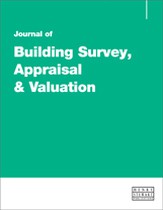Neighbourly matters: Is it time to underpin (and build on) the proven effectiveness of The Party Wall etc. Act 1996?
Abstract
Although it is generally highly effective, one of the main problems with The Party Wall etc Act 1996 (the ‘Act’) is that it has no jurisdiction over works that are not ‘notifiable’ under the Act. This can leave those living near developments involving non-notifiable elements (including some basement extensions and extensive strip-out works) with little redress against those causing sometimes horrendous disturbance. The ‘Subterranean Development Bill’ addressed some of the issues but is unlikely to reach the statute books, strengthening the case to revise the Act to encompass many of the Bill's proposals. But could notifiable works be expanded still further to encompass work generally likely to cause damage and/or noise, dust and vibration? Further, could the Act's framework be broadened (or similarly-modelled legislation be introduced) to provide new rights of access over third party land — including rights for crane oversailing and scaffold access — for general development work (subject to making fair payment according to a set fee scale)? Currently ransom payments in return for access over neighbouring land are not uncommon. Building on the Act's proven framework could address current shortcomings but there can be little doubt that proposals to reform, particular regarding third party access, would provoke interesting debate.
The full article is available to subscribers to the journal.
Citation
Audsley, James (2013, October 1). Neighbourly matters: Is it time to underpin (and build on) the proven effectiveness of The Party Wall etc. Act 1996?. In the Journal of Building Survey, Appraisal & Valuation, Volume 2, Issue 3. https://doi.org/10.69554/YLSI7434.Publications LLP
